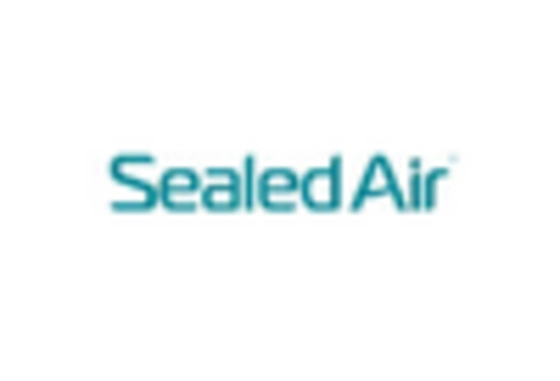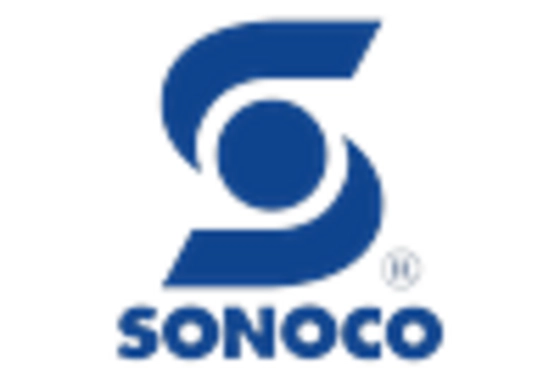Innovations in Material Science
Innovations in material science are playing a pivotal role in shaping the Medical Flexible Packaging Market. The development of advanced materials, such as biodegradable polymers and high-barrier films, is enabling manufacturers to create packaging solutions that are not only effective but also environmentally friendly. These materials offer enhanced protection against moisture, oxygen, and light, which are critical factors in preserving the efficacy of medical products. As a result, the market is witnessing a shift towards more sustainable packaging options, which aligns with the increasing regulatory pressures for eco-friendly practices. The integration of these innovative materials is likely to drive growth in the Medical Flexible Packaging Market, as companies seek to differentiate their products in a competitive landscape.
Growth of the Pharmaceutical Sector
The growth of the pharmaceutical sector is significantly influencing the Medical Flexible Packaging Market. As the demand for pharmaceuticals continues to rise, driven by an aging population and increasing prevalence of chronic diseases, the need for effective packaging solutions becomes paramount. Flexible packaging offers advantages such as lightweight design, cost-effectiveness, and ease of use, making it an attractive option for pharmaceutical companies. Recent data indicates that the pharmaceutical packaging segment is expected to witness robust growth, contributing to the overall expansion of the medical packaging market. This trend underscores the importance of flexible packaging in ensuring the safe delivery of medications, thereby reinforcing its role in the Medical Flexible Packaging Market.
Regulatory Compliance and Standards
Regulatory compliance and standards are critical drivers in the Medical Flexible Packaging Market. As governments and health organizations implement stricter regulations regarding packaging materials and processes, manufacturers are compelled to adapt to these requirements. Compliance with standards such as ISO and FDA guidelines not only ensures product safety but also enhances market credibility. This regulatory landscape is likely to foster innovation as companies invest in research and development to meet these evolving standards. The emphasis on compliance is expected to drive the demand for high-quality flexible packaging solutions, thereby propelling growth in the Medical Flexible Packaging Market. Companies that prioritize adherence to regulations may gain a competitive edge in this dynamic market.
Rising Demand for Sterile Packaging
The Medical Flexible Packaging Market is experiencing a notable increase in demand for sterile packaging solutions. This trend is largely driven by the growing emphasis on patient safety and the need to prevent contamination in medical products. As healthcare providers prioritize the integrity of medical devices and pharmaceuticals, the market for sterile packaging is projected to expand significantly. According to recent estimates, the sterile packaging segment is expected to account for a substantial share of the overall medical packaging market, reflecting a shift towards more stringent regulatory requirements. This heightened focus on sterility not only enhances product safety but also fosters consumer trust, thereby propelling the Medical Flexible Packaging Market forward.
Increasing Focus on Patient-Centric Solutions
The increasing focus on patient-centric solutions is reshaping the Medical Flexible Packaging Market. As healthcare systems evolve towards more personalized care, packaging that enhances patient experience is gaining traction. Flexible packaging solutions that are easy to open, resealable, and provide clear dosage instructions are becoming essential. This trend is particularly relevant in the context of home healthcare, where patients require convenient and accessible packaging for their medications. The market is likely to see a surge in demand for such patient-friendly packaging options, as healthcare providers aim to improve adherence and outcomes. This shift towards patient-centricity is expected to drive innovation and growth within the Medical Flexible Packaging Market.


















Leave a Comment